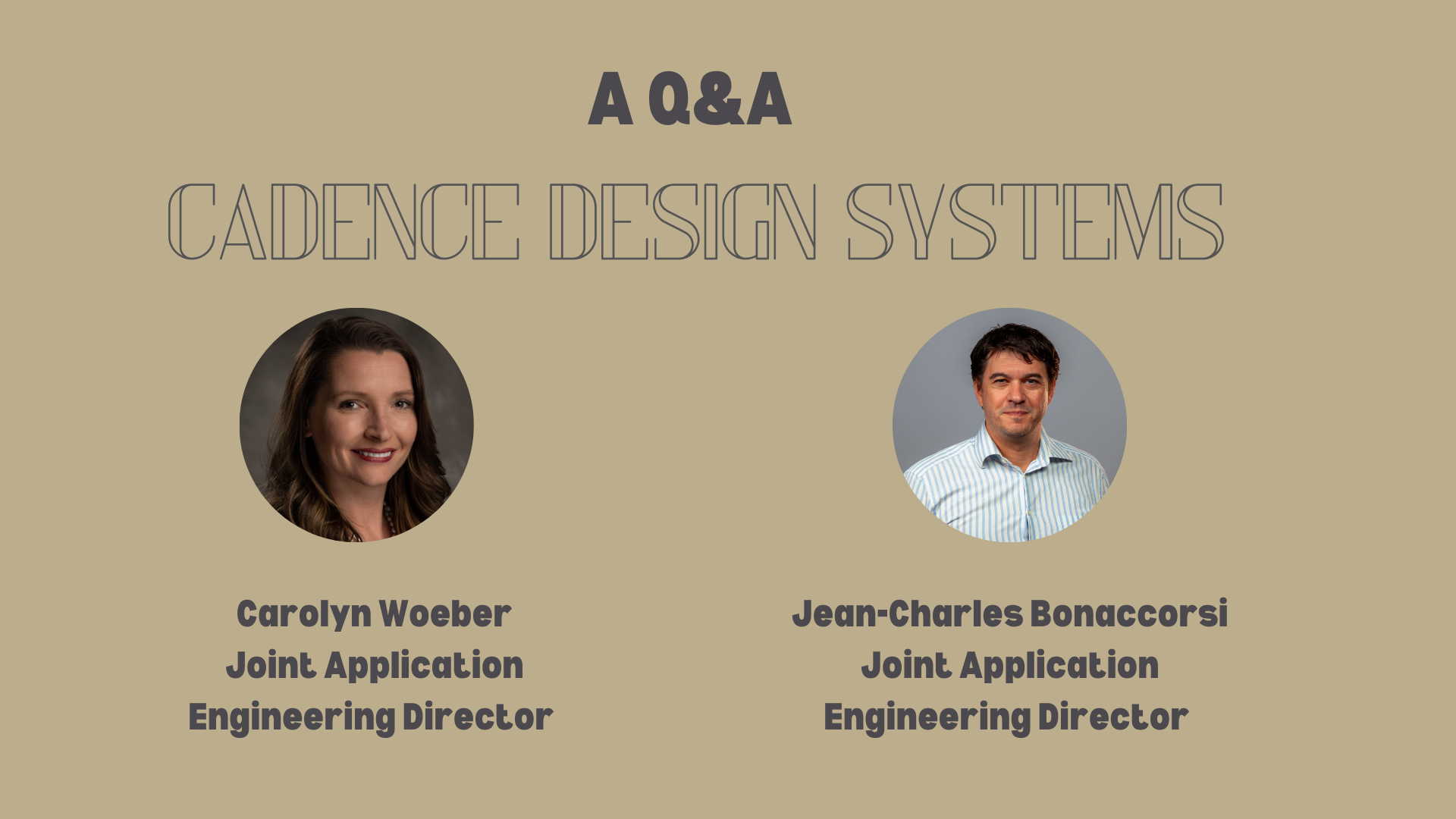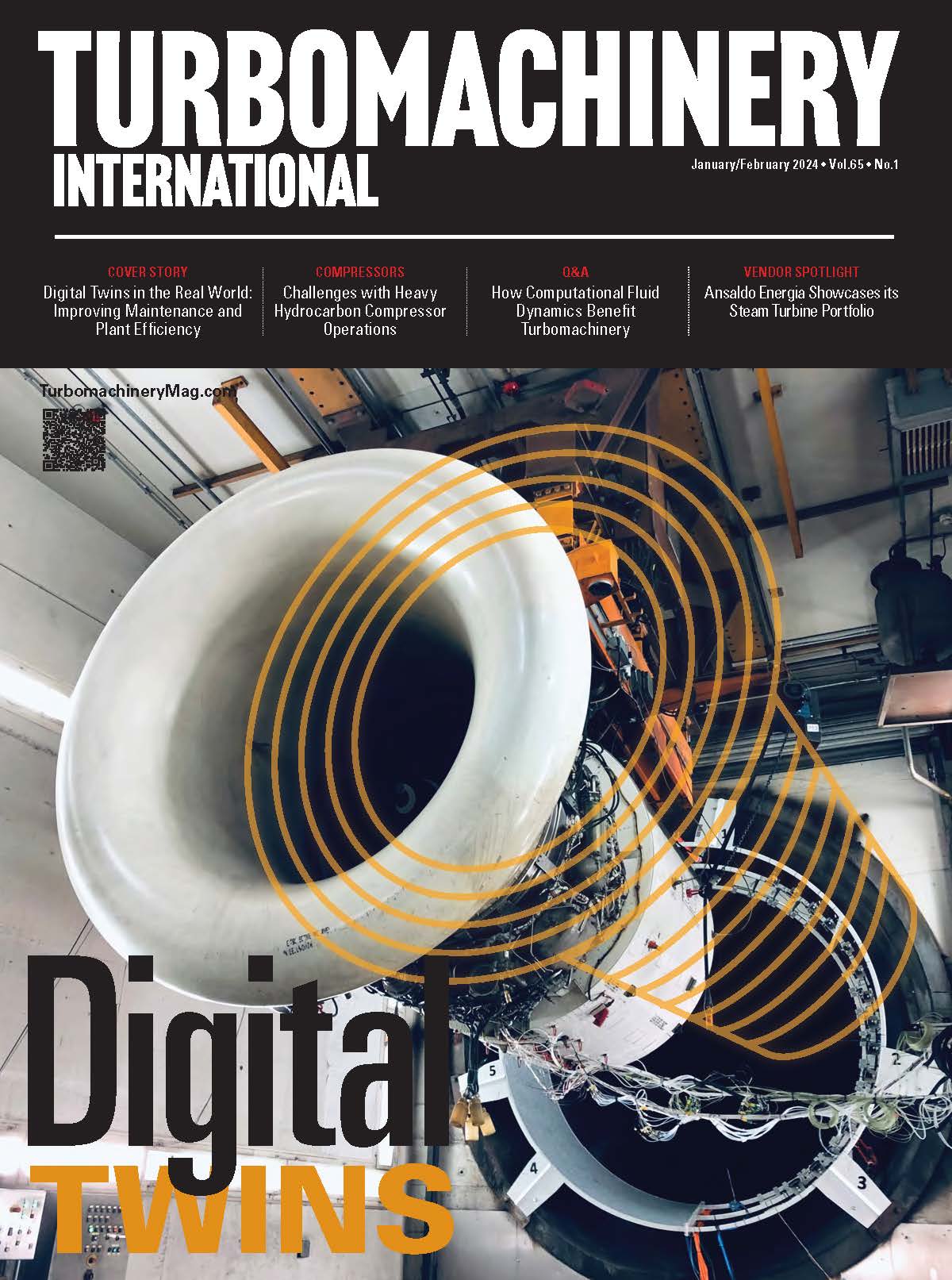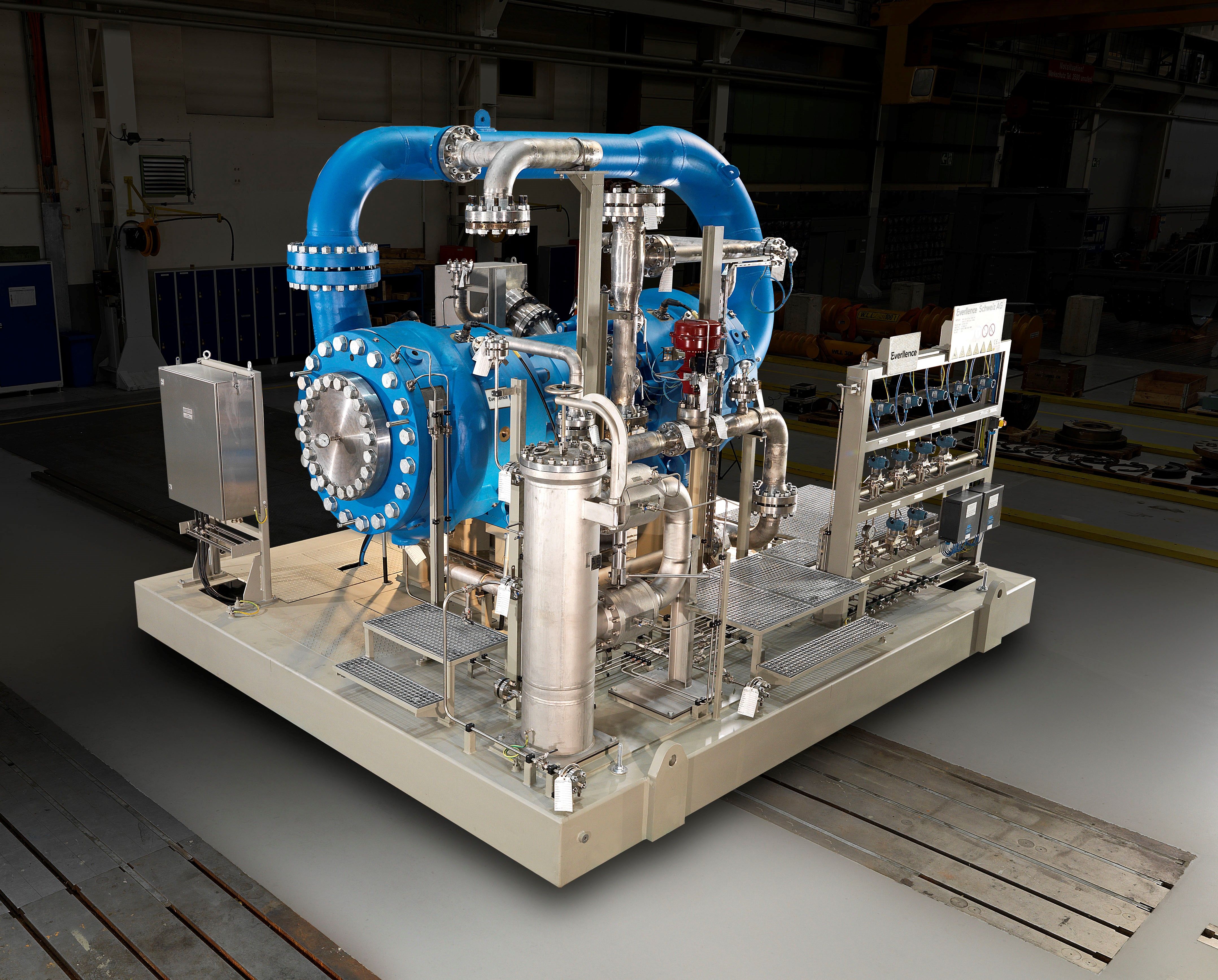Feature
Article
Turbomachinery Magazine
A Q&A: How Computational Fluid Dynamics Benefit Turbomachinery
Author(s):
Jean-Charles Bonaccorsi and Carolyn Woeber, Joint Application Engineering Directors at Cadence Design Systems, discuss the role of computational fluid dynamics in the design lifecycle, turbomachinery emissions, decarbonization, and more.
Accurately capturing the characteristics of fluid flow through a compressor or another turbomachine is critical to understanding its performance under different operating conditions. Many analysis tools are used by engineers to predict the behavior of gases and liquids to find the best design for their needs, including analytical methods, empirical correlations, physical experiment, and computational fluid dynamics (CFD). Most engineers are familiar with and use analytical/empirical analyses and experimental setups when evaluating potential designs. Increasingly, more organizations are moving to accelerate their design processes by also incorporating CFD simulations.

Engineers use CFD in their design process by starting with mechanical computer-aided design (MCAD) models as a foundation. On these models, they construct 2D meshes that adhere to and resolve the model geometry to the level of fidelity required for the numerical simulation. A mesh is then constructed in the 3D volumetric space in which the fluid flow analyses need to be conducted. This 3D space can be internal flow, external flow, or a combination of both depending on the configuration. The topology used to define both the surface and volume mesh regions can vary depending on the type of fluid flow phenomena being studied. Different topologies can provide flow alignment or control over mesh resolution, which can be beneficial for increased accuracy in the simulation. These meshes are fed into CFD solver programs, which solve complex sets of partial differential equations to compute velocity, temperature, pressure, entropy, etc., for the entire flow field as defined by the mesh. With the use of high-speed supercomputers, which are often required for complex configurations, these solutions can be obtained quickly and with a high level of accuracy for challenging physical phenomena. Initial computational results are normally validated against experimental data. The final data sets from these simulations are later compared against existing experimental data from full configuration testing and against any analytical/ empirical calculations that were made.
Used in this way, CFD accelerates existing design processes as it enables the exploration of design spaces in ways and to an extent that would be cost-prohibitive, if not technically infeasible, using experiment alone.
Q: How does CFD software impact the turbomachinery industry?
Bonaccorsi: CFD is an efficient way to use resources when doing fluid analysis because an operator doesn’t have to rely on the eight-hour workday to limit how much the analysis can progress. With CFD software, a simulation can run overnight. You press the button, go home, and come back the next morning with the job done. With scalable tools such as CFD software, the investment costs for enhancing workflow are the number of machines running.
Woeber: For turbomachinery design workflows, there are a wide range of computing platforms available that give companies flexibility to approach these challenges in a way that best suits the scalability they need for their design processes.
Q: How can CFD be used in the context of real-world design scenarios?
Bonaccorsi: Because of the scalability factor of CFD, a team can quickly review different designs and verify that its conclusions are correct. Everyone has access to a central processing unit, graphics processing unit, and the cloud, which means CFD is quite accessible to designers.
Woeber: CFD data can complement the work that designers are doing from an experimental point of view. For instance, it can be challenging to capture factors such as cavitation, fatigue, and other stressors that can occur. In an experimental rig, data will only come from where sensors are placed. With CFD, when you run a simulation, you’re getting the entire flow field. That allows you to rapidly identify where you might have some inefficiencies or where a failure could take place that you may not capture in an experimental setup. Here, engineers will get a more immediate idea of what the final design should look like.
Q: How can CFD help gas turbines curtail emissions and meet regulatory requirements?
Woeber: In the turbomachinery industry, designers must be able to explore large design spaces and revolutionary new ideas to meet emissions standards. For conventional designs, with natural gas, for example, the objective is to make the system as fuel-efficient as possible. However, alternative methods are also being explored to find solutions. We have seen designers looking at alternative fuels, and as soon as you start going down that pathway, that presents an even larger design set that needs to be evaluated. Rapid turnaround times and artificial intelligence/machine learning (AI/ML) are tools that can assist in this process. One solution is how we use 3D designs to provide a streamlined turbomachinery design experience using ML methods.
Q: When it comes to working fluids in turbomachinery, how can CFD help address the major issues our industry is facing?
Woeber: Sustainability and decarbonization are and will remain two of the most abundantly discussed topics of interest in the future of energy. As it relates to a gas turbine power plant, improving operational efficiency is frequently underscored as the way forward in these ambitions. CFD simulations can be used to explore and optimize operational efficiency for multiple components in these systems and are an ideal way to navigate these challenges going forward.
To hear more about CFD, check out the TurboTime Podcast with Cadence Design Systems.

Newsletter
Power your knowledge with the latest in turbine technology, engineering advances, and energy solutions—subscribe to Turbomachinery International today.





